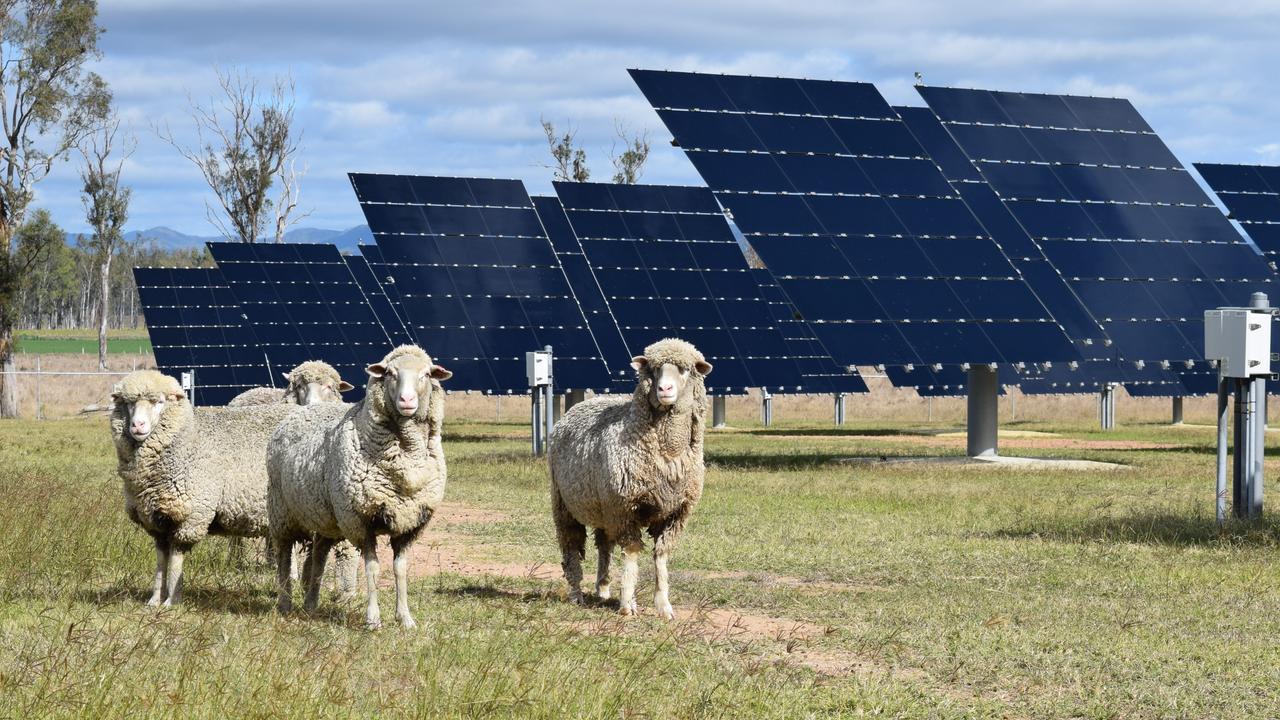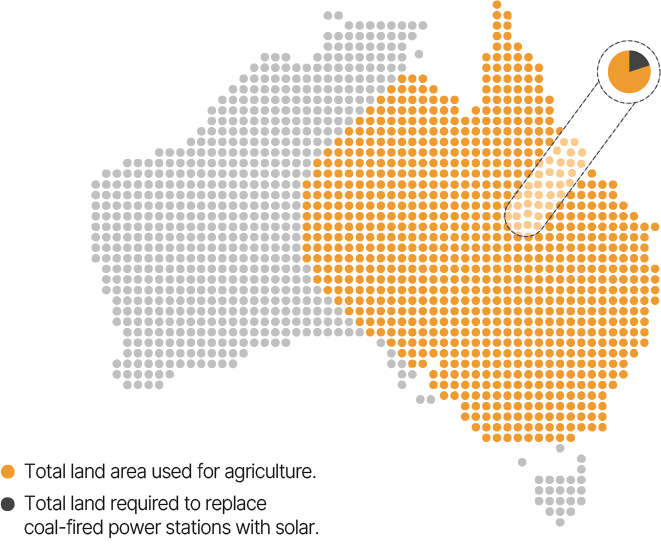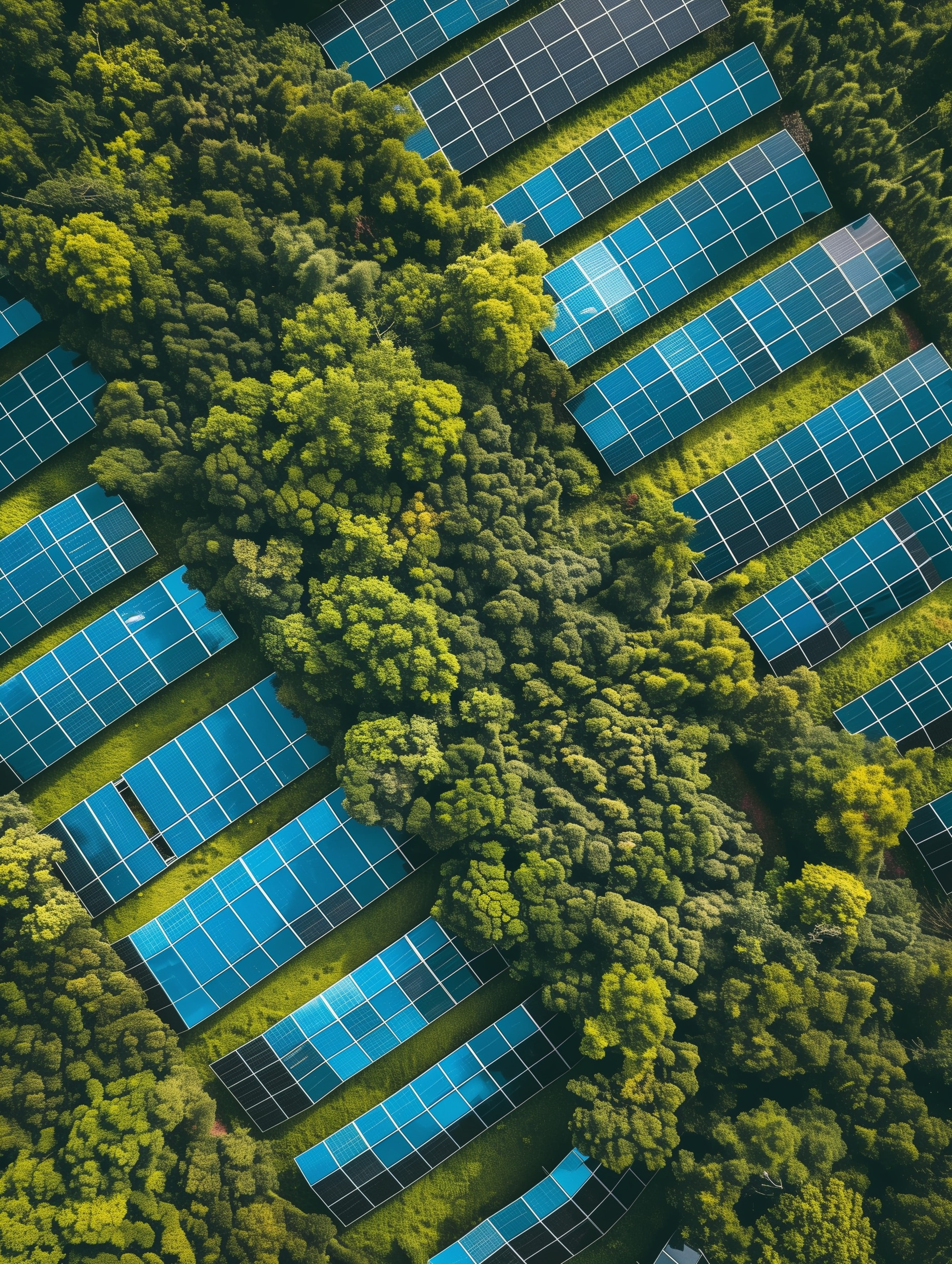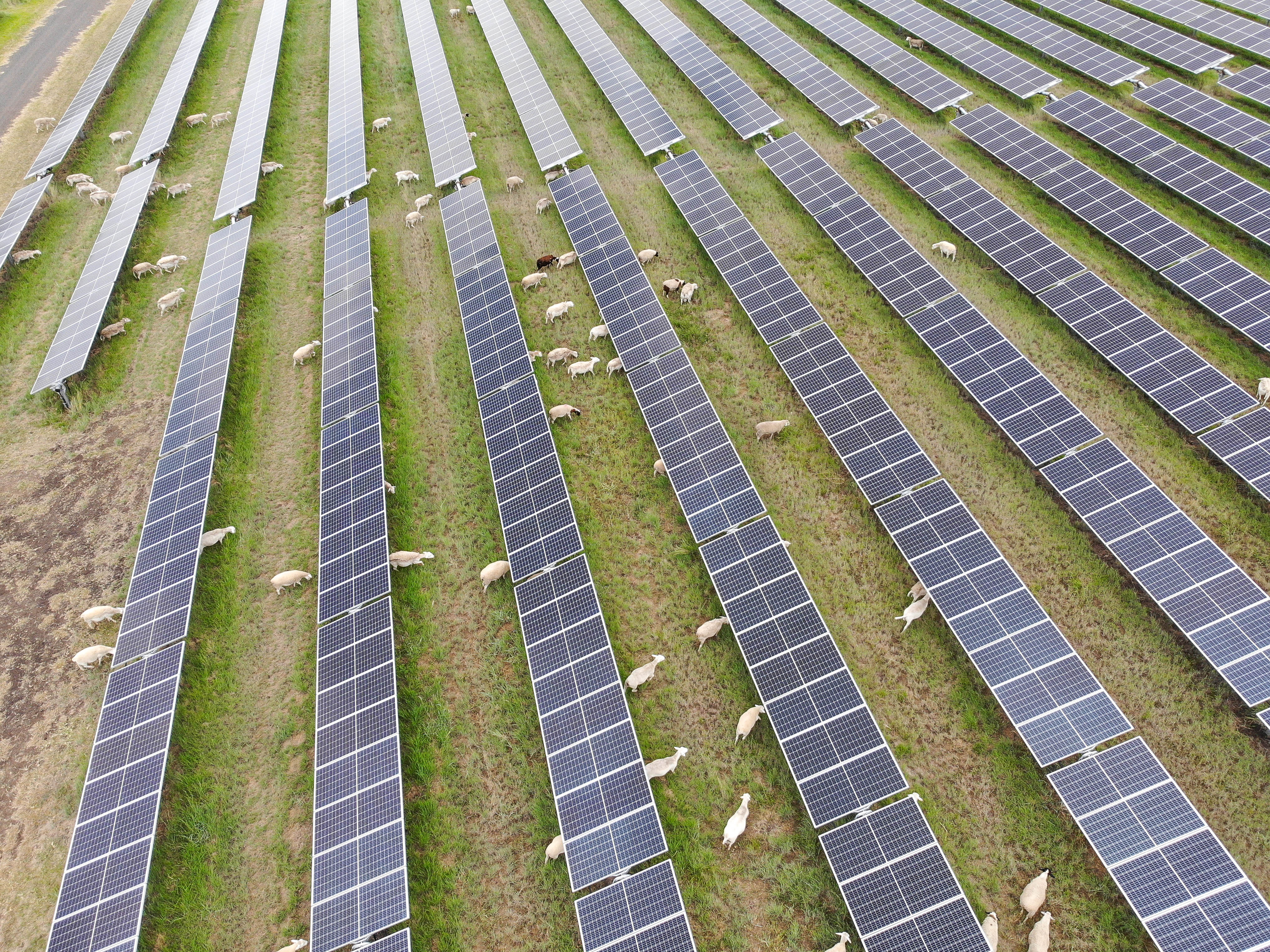Renewable energy projects offer significant opportunities for co-existence with agriculture. Through innovative practices such as agrisolar, renewable energy and agriculture can mutually benefit each other while providing additional income streams to landholders. By embracing this complementary path, rural communities can harness renewable energy while maintaining their agricultural heritage and livelihoods.
What is agrisolar?
Agrisolar refers to co-developing the same area of land for both solar power and agriculture. Agrisolar involves integrating solar projects with agricultural activities, such as livestock farming, to create mutually beneficial outcomes. Examples of agrisolar include sheep grazing under solar panels or the construction of large-scale greenhouses with solar panelled roofs, allowing for continuous horticulture production while utilising roof space to generate electricity (1).
What are the benefits of co-existence?
Livestock grazing beneath solar panels not only provides an additional income stream for landholders, but also offers environmental benefits. The shade provided by solar panels reduces heat stress in animals, improves pasture quality and enhances animal welfare. Grazing by the animals helps reduce maintenance costs for the solar facility. Furthermore, the moisture collected overnight on solar panels helps drought-proof parcels of land.
What are the advantages for agriculture?
Agrisolar is unlikely to be compatible with all crops, but early international studies indicate that the shade of the solar panels can result in the same, or higher, production yields. In some instances, the panels also provide more significant water savings, depending on the climate and agrisolar system.
What are the economic benefits of hosting renewables on my land?
Renewables offer farmers a guaranteed income that isn’t connected to fluctuating commodity prices or impacted by extreme weather. Farmers are now typically offered more than $40,000 rent per turbine per year and up to $1500 per hectare per year for solar panels and studies confirm sheep which graze under the panels are showing improved wool yields. Farmers and landholders are expected to receive between $7.7 billion and $9.7 billion in direct payments between 2024 and 2050 from renewables projects.
As a landholder, what’s in it for me?
Landholders earn income from hosting a solar project and if you’re already running sheep, the solar farm operator could contract you to graze them to keep grass heights low. Essentially, you’d be earning two income streams from the one parcel of land. Sheep also benefit from grazing underneath panels and this could result in increased value at market. There are some important considerations here, especially around insurance and risk, so you should speak to the proponent and your insurance broker to understand if this is right for you.
CASE STUDY:
University of Queensland Gatton Solar Farm
The University of Queensland’s (UQ) Gatton Solar Farm has grazed sheep in partnership with its Veterinary School since 2016. It has worked so well that UQ designed its new solar farm at the rural community of Warwick, Queensland, with sheep grazing in mind.
In 2019, following consultation with the Veterinary School and several inspections for hazards to livestock and property, grazing commenced in the paddocks with fixed-tilt arrays. UQ has found the arrangement has been beneficial to the sheep's health, with the panels providing protection from the elements and supporting improved vegetation growth, increasing feed for the animals. The greatest advantage, by far, has been the security provided by the solar farm perimeter fence. This secure perimeter prevents death and injury caused by wild dog attacks to the livestock, a prevalent issue in Queensland.
Grazing has saved UQ approximately $100,000 annually in maintenance costs, as the requirement to mow has been completely removed.

How much land is needed for solar farms?
As a rule of thumb, standard large-scale solar farms (single-axis tracking) utilise an average of around 2 hectares per 1 MW (dc) of installed solar capacity. In practical terms, a 100 MWdc solar farm would require access to approximately 200 hectares of land. (The land area needed for every megawatt of installed capacity is expected to decline as solar moddules become more efficient.)
The Australian Energy Market Operator has estimated up to 50 GW of ‘variable renewable energy’ (wind and solar power) capacity will need to be installed between 2020 and 2040 to replace Australia’s retiring coal-fired power stations.
In the unlikely event that all of this new variable renewable energy were to be in the form of large-scale solar, then the total land required to support this solar generation would be up to 120,000 hectares. That’s the equivalent of less than 0.016 percent of Australia’s total land currently used for agricultural production. By contrast, Australian agriculture currently accounts for 58 per cent of Australian land use. The impacts of a relatively small percentage of cleared rural land required to support new solar power projects in Australia can be further minimised by pursuing integrated land uses with other sectors.

CASE STUDY:
Dubbo Solar Farm
Farmer Tom Warren is based in regional New South Wales, where he farms Merino sheep. One of the world’s leading independent producers of renewable energy offered Tom an agreement to lease part of his property. Following research into the company’s solar farms overseas, Tom discovered that some of the landholders were grazing sheep underneath the solar panels. For the operations and maintenance team, the frequency of mowing has been reduced. Tom, on the other hand, has been able to maintain his grazing business, while earning income from leasing his property.
The grazing arrangement has even presented opportunities for Tom to save money. For example, during a recent drought, the solar farm retained green pasture due to condensation from the panels running off between the rows. While other farms in the district needed to resort to additional feed for sheep for over 18 months, Tom needed to source additional feed for just three months (1).


